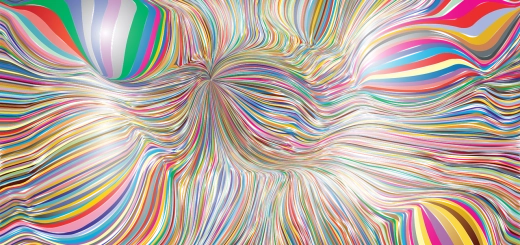Sketching Tips for Beginners: Techniques and Tools

Looking for more amazing products? Check out our online store and explore our collection here! Happy shopping!
Before diving in, please note: This post is for informational purposes only. If you’d like to know more about how we approach topics, feel free to check out our friendly Disclaimer Page.
Hey there, amazing readers! 
We’re committed to delivering quality posts, and your support (even just sticking around despite the ads) means everything to us. So, bear with us, and thanks for helping us keep the good vibes rolling. Now, on to the fun stuff!
TRANSLATE BUTTON AT THE END OF THE ARTICLE
Introduction to Sketching Tips for Beginners
Embarking on a journey into the world of sketching can be both exciting and intimidating for beginners.
However, with the right techniques and tools, anyone can learn to sketch like a pro.
Whether you’re looking to unleash your creativity, improve your drawing skills, or simply relax and unwind, sketching can be a rewarding hobby.
This article will provide valuable insights and tips for beginners to enhance their sketching abilities and explore the endless possibilities of this art form.
Importance of Learning Sketching Techniques
Learning sketching techniques is crucial for beginners as it forms the foundation for creating captivating and realistic drawings.
By mastering the basics of sketching, such as line work, shading, and perspective, beginners can elevate their artwork to new levels.
Understanding these techniques will not only improve the quality of your sketches but also boost your confidence as an artist.
Practice and patience are key when it comes to honing your sketching skills, so don’t be discouraged if your early attempts don’t meet your expectations.
Basic Tools Needed for Sketching
Before diving into the world of sketching, beginners need to gather the essential tools to kickstart their artistic journey.
Here are some basic tools you’ll need to begin sketching:
Sketchbook: A high-quality sketchbook with thick paper to prevent bleed-through and provide a smooth surface for drawing.
Pencils: A range of graphite pencils in different grades (e.g., 2H, HB, 2B) for varying line weights and shading effects.
Eraser: A soft kneaded eraser for precision erasing and a white vinyl eraser for more extensive corrections.
Sharpener: A reliable pencil sharpener to keep your pencils sharp for detailed work.
Blending Stump: A blending stump or tortillon for smudging and blending graphite for smooth transitions.
Choosing the Right Paper for Sketching
Selecting the right paper for sketching is crucial as it can greatly impact the quality of your artwork.
Consider the following factors when choosing paper for your sketches:
Texture: Smooth paper is ideal for detailed drawings, while textured paper adds depth and character to your sketches.
Weight: Heavier paper (measured in grams per square meter, or GSM) is more durable and less likely to wrinkle or tear.
Tooth: The tooth of the paper refers to its surface roughness, which affects how well it holds graphite and other drawing materials.
Experiment with different types of paper to find the one that best suits your sketching style and preferences.
Understanding Different Pencil Grades
Pencil grades determine the hardness or softness of the graphite core, affecting the darkness and quality of your lines.
Here’s a quick guide to common pencil grades and their uses:
H (Hard): Hard pencils (e.g., 2H, 4H) produce light, fine lines ideal for sketching outlines and details.
HB: A medium-grade pencil that offers a balance between light and dark lines, suitable for general sketching.
B (Soft): Soft pencils (e.g., 2B, 4B) create darker, bolder lines perfect for shading and adding depth to your sketches.
Experiment with different pencil grades to discover the range of effects you can achieve in your artwork.
Tips for Improving Your Sketching Skills
To enhance your sketching skills and unleash your creativity, consider the following tips:
Practice Regularly: Set aside time each day to sketch and experiment with different techniques.
Observe and Learn: Study objects, people, and landscapes to improve your observation skills and understanding of form.
Start Simple: Begin with basic shapes and gradually progress to more complex subjects as you gain confidence.
Seek Feedback: Share your sketches with friends, family, or online communities to receive constructive criticism and tips for improvement.
By incorporating these tips into your sketching routine, you’ll see noticeable progress in your artwork over time.
Experimenting with Different Shading Techniques
Shading is a crucial aspect of sketching that can add depth, dimension, and realism to your drawings.
Experiment with various shading techniques to enhance your sketches:
Hatching: Drawing closely spaced parallel lines to create value and texture.
Cross-Hatching: Layering intersecting lines to achieve darker tones and shadows.
Blending: Using a blending stump or your fingers to smudge and soften harsh lines for a smoother appearance.
Stippling: Creating texture and shading by dotting the paper with a pencil or pen.
Practice different shading techniques to find the ones that work best for your style and subject matter.
Utilizing Erasers for Precision in Sketching
Erasers are not just for correcting mistakes; they can also be used creatively to add highlights, texture, and details to your sketches.
Here are some ways to utilize erasers in your drawings:
Highlighting: Use a kneaded eraser to lift graphite and create highlights on your sketches.
Texture: Experiment with erasers to add texture or patterns to specific areas of your artwork.
Precision: Use an eraser pencil or fine tip eraser for precise erasing in detailed sections of your drawing.
By mastering the art of erasing, you can achieve cleaner and more polished sketches with intricate details.
Incorporating Color into Your Sketches
While graphite pencils are the go-to tool for sketching, don’t be afraid to experiment with color to add vibrancy and interest to your drawings.
Consider incorporating colored pencils, markers, or watercolors into your sketches to create stunning effects and enhance your artwork.
Start by experimenting with a limited color palette and gradually expand your use of color as you become more comfortable with mixing and blending different hues.
Practicing Regularly to Enhance Your Skills
Like any skill, sketching requires consistent practice and dedication to improve.
Make sketching a part of your daily routine to sharpen your skills, develop your artistic style, and push your creative boundaries.
Set goals for yourself, such as completing a certain number of sketches per week or trying out new techniques, to keep yourself motivated and engaged.
Remember, the more you practice, the more your skills will evolve and grow.
Seeking Inspiration from Other Artists
One of the best ways to fuel your creativity and expand your artistic horizons is by seeking inspiration from other artists.
Explore art galleries, attend workshops, watch online tutorials, and connect with fellow artists to discover new techniques, styles, and perspectives.
By studying the work of established artists and emerging talents, you can gain valuable insights, ideas, and motivation to take your sketching to the next level.
Conclusion: Continuing Your Sketching Journey
In conclusion, sketching is a versatile and enjoyable art form that offers endless opportunities for self-expression and creativity.
By mastering basic techniques, experimenting with different tools and materials, and practicing regularly, beginners can enhance their sketching skills and create captivating artwork.
Remember, there are no shortcuts to becoming a skilled artist; it takes time, dedication, and a willingness to learn and grow.
So, grab your sketchbook, sharpen your pencils, and embark on your sketching journey with enthusiasm and passion.
Happy sketching!

The Enlightenment Journey is a remarkable collection of writings authored by a distinguished group of experts in the fields of spirituality, new age, and esoteric knowledge.
This anthology features a diverse assembly of well-experienced authors who bring their profound insights and credible perspectives to the forefront.
Each contributor possesses a wealth of knowledge and wisdom, making them authorities in their respective domains.
Together, they offer readers a transformative journey into the realms of spiritual growth, self-discovery, and esoteric enlightenment.
The Enlightenment Journey is a testament to the collective expertise of these luminaries, providing readers with a rich tapestry of ideas and information to illuminate their spiritual path.
Our Diverse Expertise
While our primary focus is on spirituality and esotericism, we are equally passionate about exploring a wide range of other topics and niches 

To ensure we provide the most accurate and valuable insights, we collaborate with trusted experts in their respective domains 
Our blog originally focused on spirituality and metaphysics, but we’ve since expanded to cover a wide range of niches. Don’t worry—we continue to publish a lot of articles on spirituality! Frequently visit our blog to explore our diverse content and stay tuned for more insightful reads.
Hey there, amazing reader! 
Check out our store here and take a peek at some of our featured products below! Thanks for being awesome!











